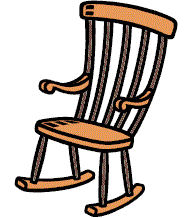

Currently in Auckland: NZDT
Thursday, 8th of January 2026
In another time and place, many years ago, I was a coach for a T-ball team. T-ball is a form of baseball that introduces very young players, ages 4 to 8, to the basics of the game.
In T-Ball, there usually is no pitcher except perhaps for defensive purposes. The ball is placed on an adjustable tee atop the home plate and adjusted to a suitable height for the batter.
Because it is simply an introduction to the sport of baseball, the game is designed to teach basics and have fun. Usually no score is kept and an inning lasts until all the players on one side have batted and all the players on the defensive team have had a turn in the field. At least that is the way we played the game in those days.
In one of our very first games against an opposing team, all the finer points of the game still had not been covered and the coaches still had to tell a few of the younger players not only when to run, but where.
One particularly young player got up to the plate and managed to hit the ball a short way, but far enough for him to get to first base. I went to the third base coaching box to guide him around to home, if and when he made it that far.
The next batter stepped up to the plate after taking a few practice swings, just like the pros do and with a mighty swing, hit the ball over second base and into center field. The center fielder watched the ball hit the ground in front of him and without making a move, watched it roll between his legs. Seeing that it wasn't caught on the fly I looked at first base and saw the young man start to run. So far so good.
I looked back to center field where the ball had rolled to a stop and saw the fielder out there was having a bit of trouble picking up the ball ... especially with his gloved hand! There was always an urge to use the glove, even if it wasn't necessary. After all, why else wear it!
Eventually, the center fielder got the ball in the glove, transferred it to his other hand and threw it toward second base on a hop or two. The second baseman picked up the ball, turned and looked for the runner that was at first when all this started. He was nowhere in sight. I looked for him too and only saw the batter who had just hit the ball and he was standing on first base. So where was the boy who used to be at first base?
Looking around the field for my errant runner I began thinking he may have gone back to the dugout or who knows where.
It was then I looked down to see him standing right in front of me on third base with a big smile on his face. I got down on my haunches and said, "Tell me, how did you get here?" He said, "I ran." I said, "I know but from where?" He pointed at first base and said, "From over there."
I said, "Did you cross the pitchers mound to get from there to here?" He said, "Uh-huh." "You can't do that." I explained, "you really have to go to second base first and then come here to third base." Without skipping a beat and with all the logic of a sage he said, "I couldn't run to second base, he would have got me out so I came here instead!" I could tell by the grin on his face how very proud he was of his fast thinking.
What could I say, he was probably right, he could have been out if he ran to second base! I stood up and looked at the opposing coach who was smiling and shaking his head. He turned his palms up and shrugged his shoulders. I did the same back to him, leaned down and told the boy, "You really have to go to second base next time, okay?" He smiled, said, "Okay." He then turned to watch the next batter at the plate like nothing had happened.
In the years since, I have often wondered what happened to that quick thinking young man. I like to think that, as he grew up, he continued to wander off the beaten path and using plain old logic, succeeded in overcoming whatever obstacle stood in his way.
